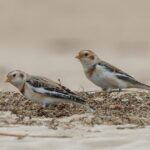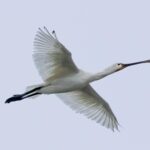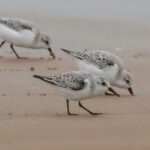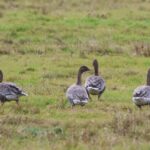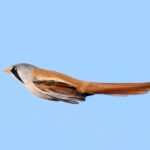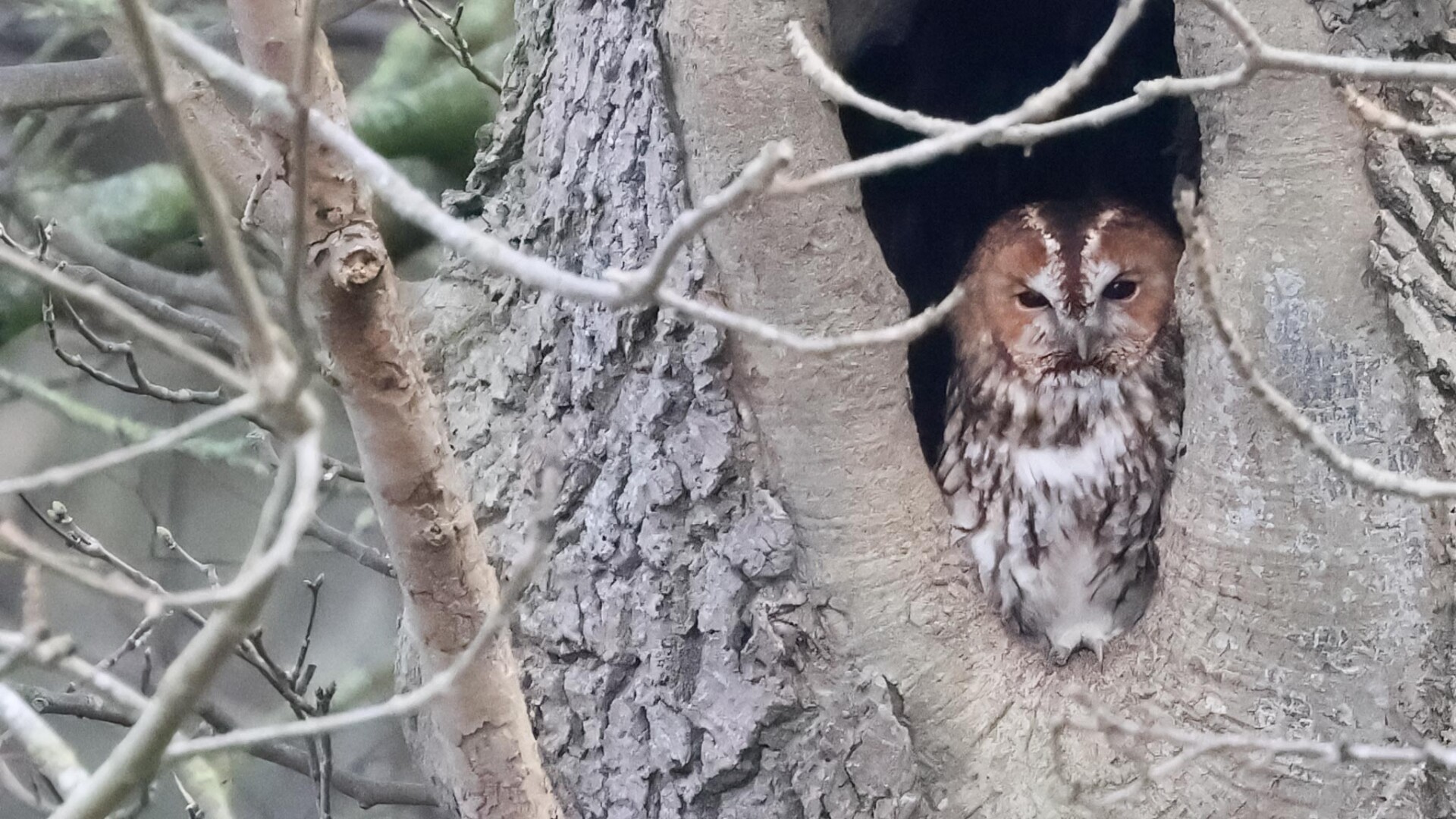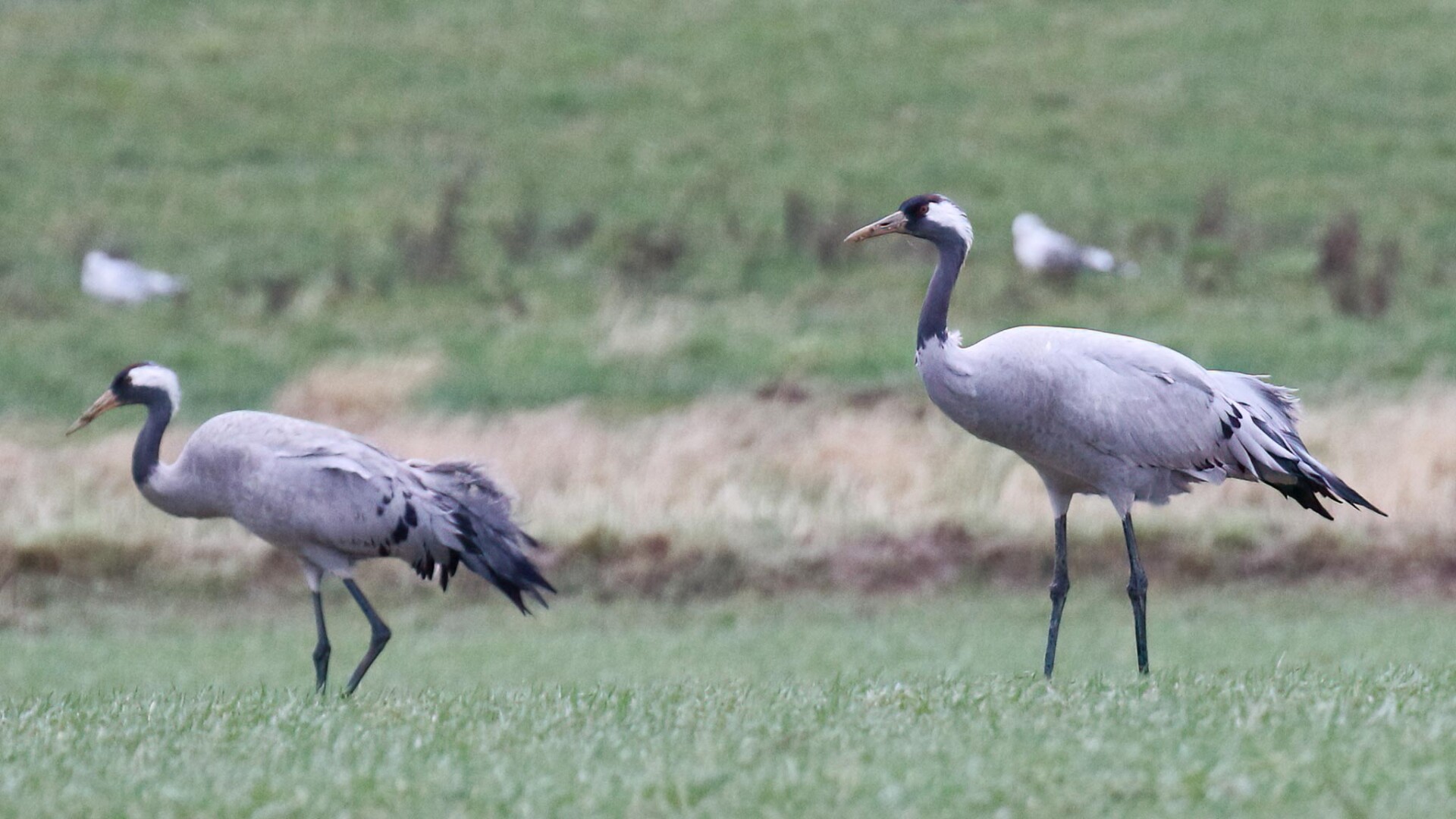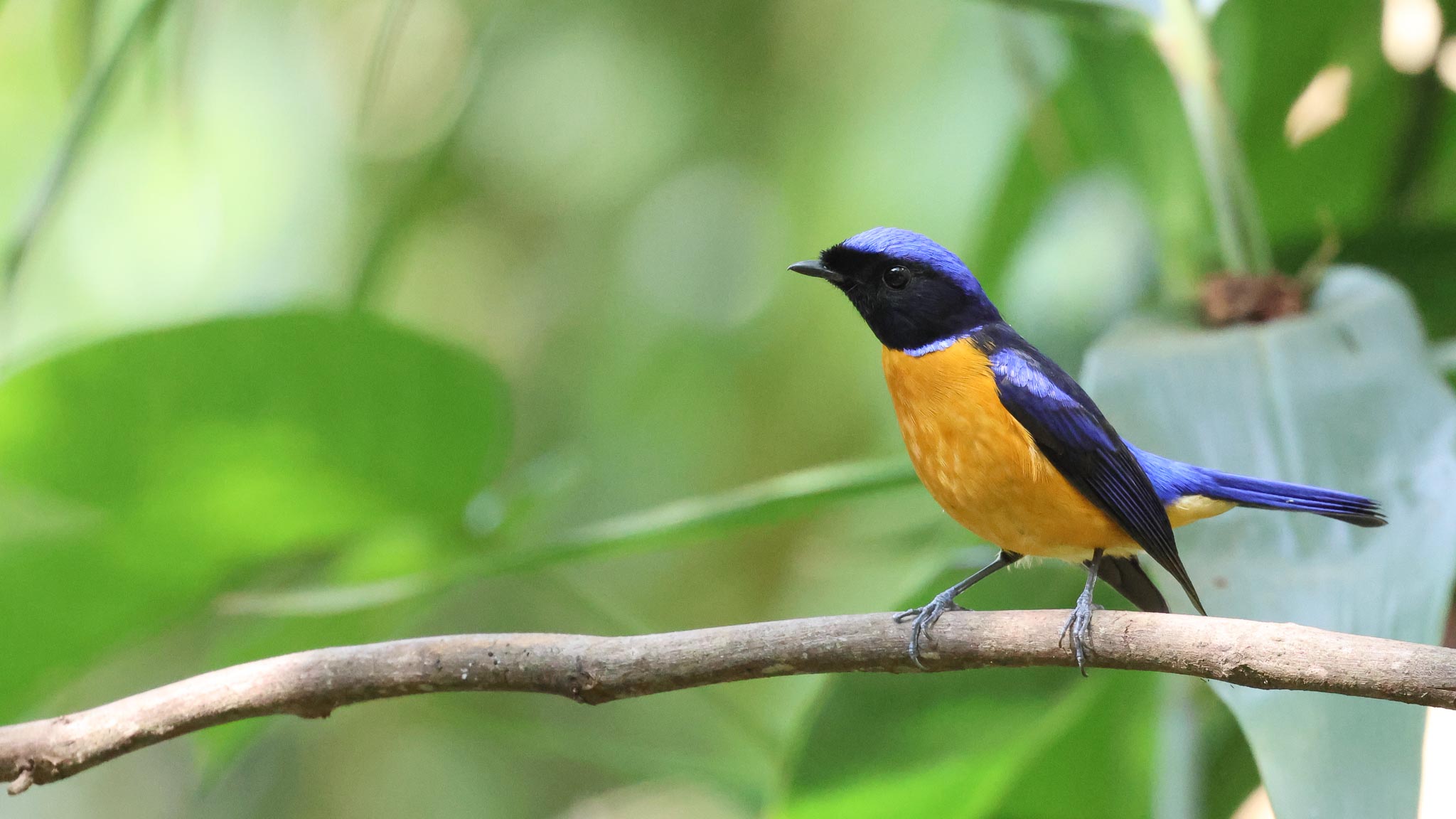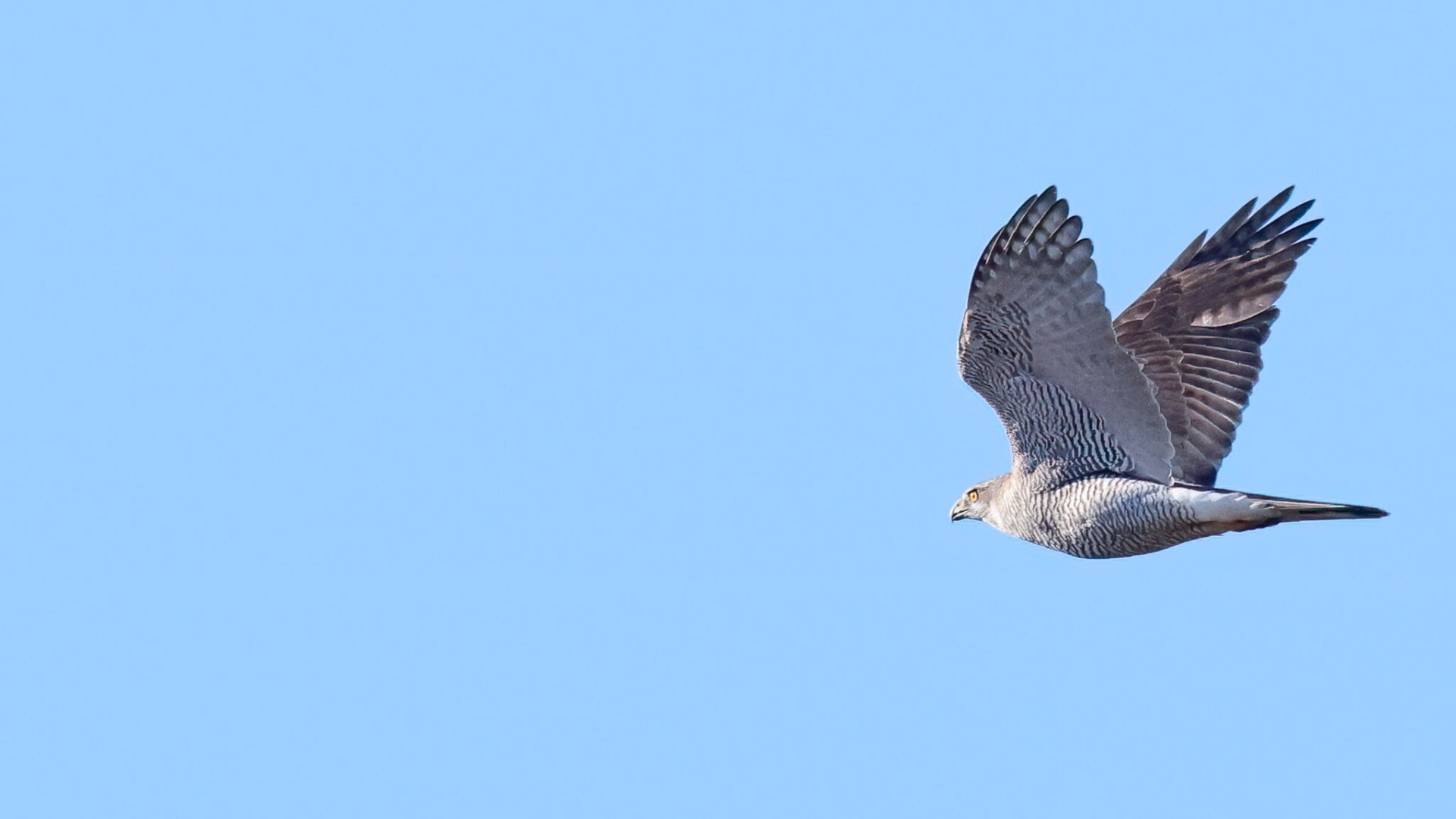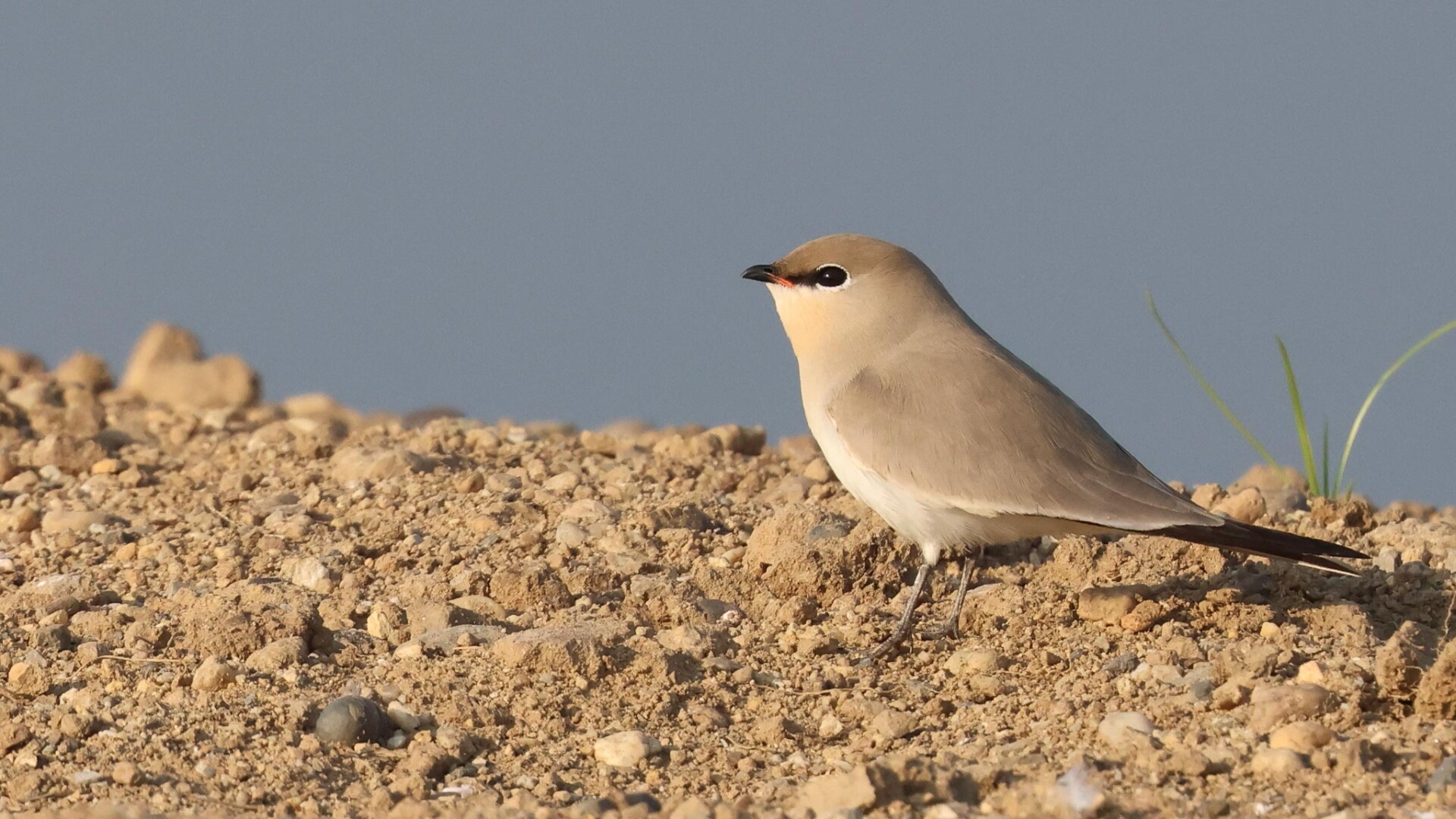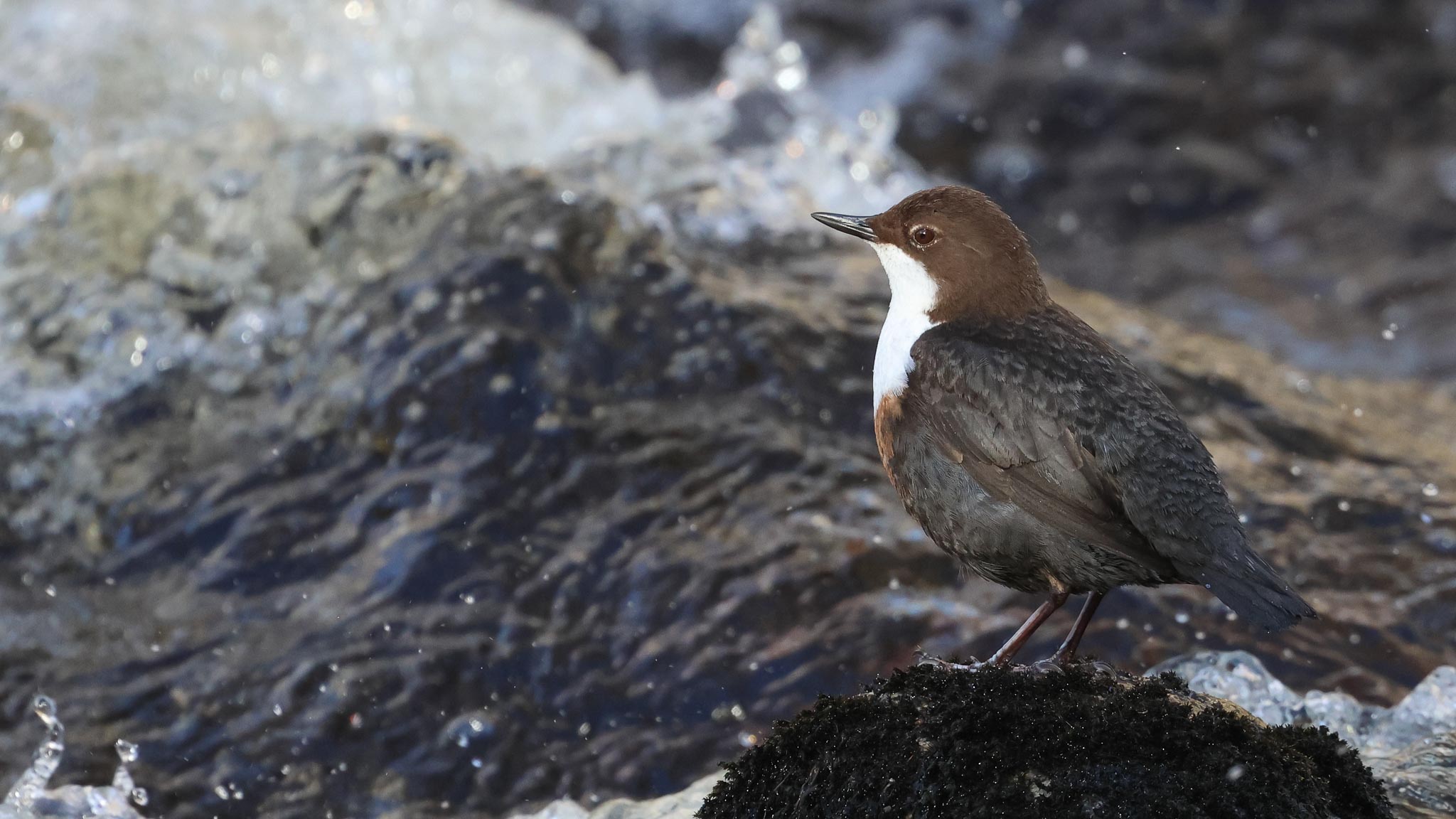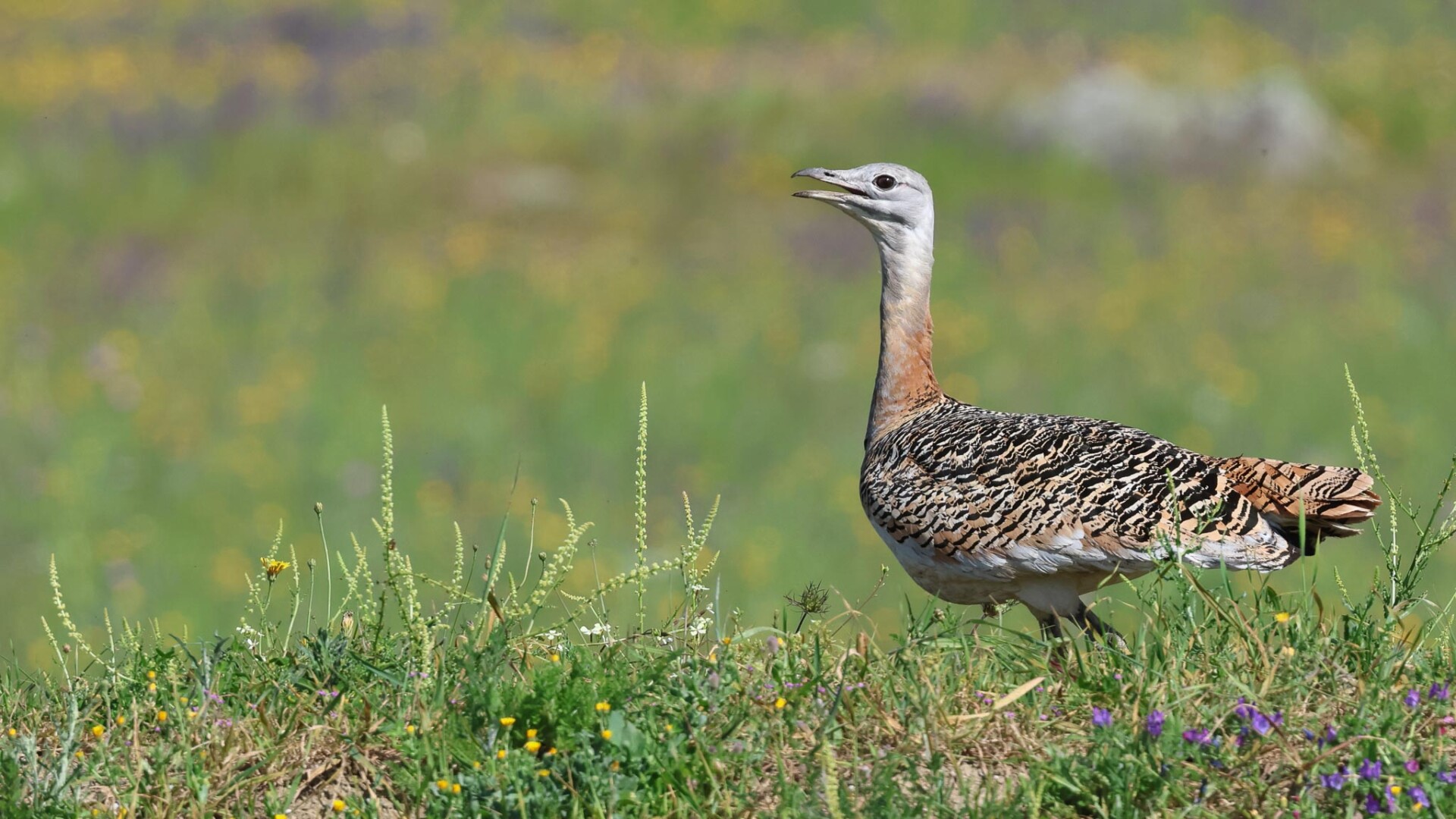Day 2 of a 3-day Early Winter Tour in Norfolk. After some more wintry showers overnight, we woke to freezing fog this morning. Depending on which forecast you looked at, either it was meant to be bright with sunny intervals all morning or the fog was due to lift after a couple of hours – unfortunately that was all wrong. The local news last night mentioned that, with light winds, there was a risk any fog could linger, and so it did, all day. Thankfully it lifted a little for periods and we were able to see some good birds, despite the fog.
It was a slow drive up to the coast this morning, the roads treacherous with the freezing fog and an overnight covering of snow which was now turning to slush. When we arrived at Titchwell, it was highly unusual but not a great surprise to see only two other cars already there. We had a quick look in the bushes in the overflow car park and out over the paddocks from the gates at the end, but apart from a few gulls it was quiet. At least the fog seemed to have lifted a bit, so we decided to head out onto the reserve. As we walked down along the path to the Visitor Centre, a Treecreeper landed on a tree in front of us and posed nicely.
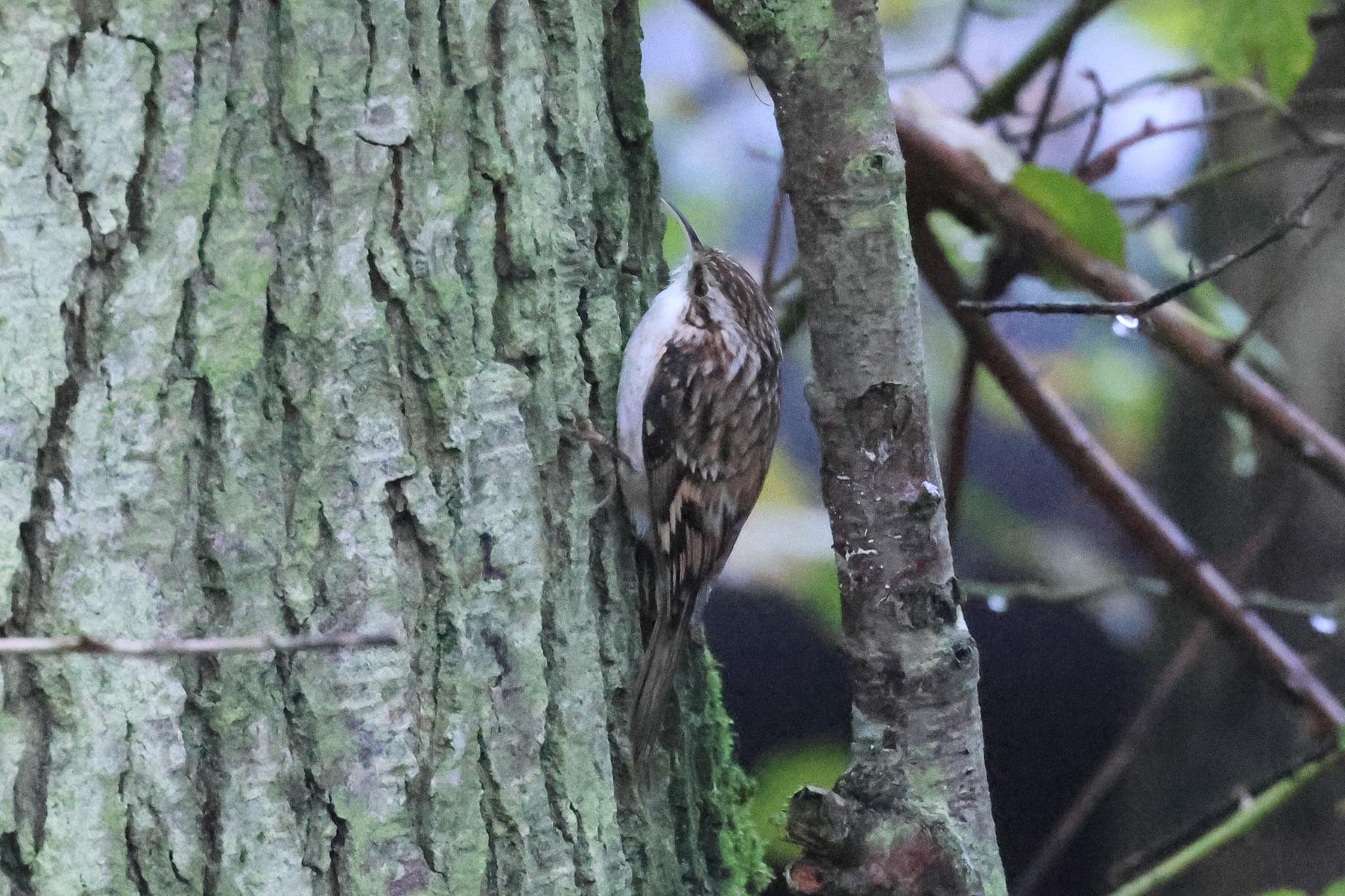
There was quite a bit of water in the ditches either side of the main path and no sign of any Water Rails there this morning as we passed. Out of the trees, we could see right to the back of the reedbed now. One Marsh Harrier was perched in the dead trees and another two came up out of the reeds and circled round. The pools and channels in the reedbed looked largely frozen, so we pressed on to the Freshmarsh.
Just before we got to Island Hide, we noticed a Goosander on the water behind the closest island. It swam round and straight towards the hide, so we decided to head down in the hope we would get a closer view. Unfortunately, by the time we got into the hide it had flown off, so we set about trying to see what else we could find. Some people in the hide told us there was a Water Rail along the edge of the reedbed, so we got the scope on it. It disappeared back into the reeds, but a little later emerged further along and then followed the edge all the way until we lost sight of it in the corner.
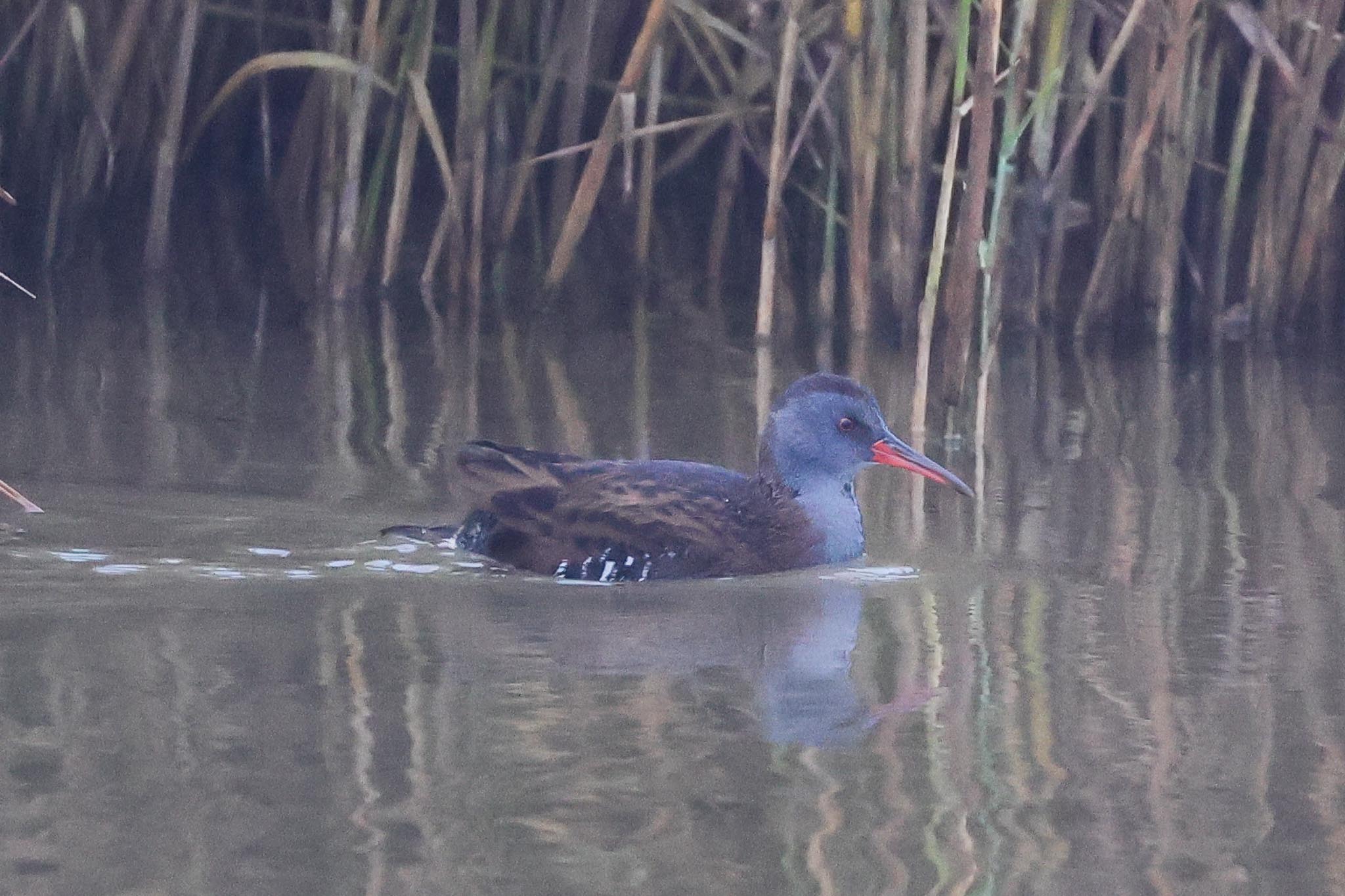
There were lots of ducks on the water – Wigeon, Teal, Gadwall, Shoveler and three Pintail. A small flock of Brent Geese were over towards the back and we noticed a small duck behind which promptly dived under the surface. A distinctive shape, we knew immediately it was a Smew, so we got the scope on it when it resurfaced. A ‘redhead’, a female or immature, we were watching it when we realised there were actually two Smew out there. After a while, they came together and we watched them catching small fish. A rare bird here these days, we put the news out and it caused quite a stir – a succession of the staff coming out to see them.
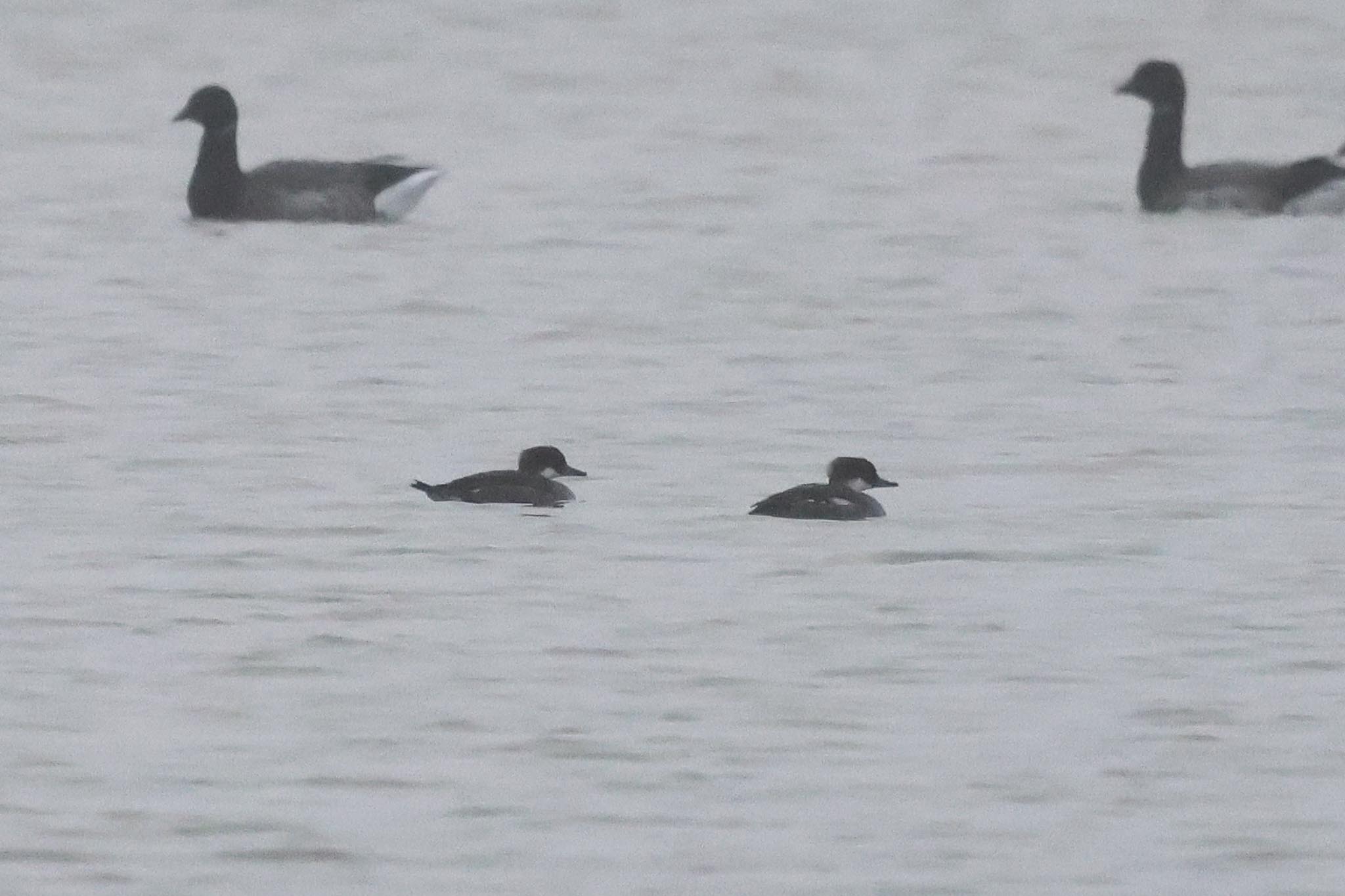
Back out on the main path, there were more ducks on the next compartment and a Grey Plover and a couple of Dunlin were feeding in with them. We had a better view of the Grey Plover from the path down to Parrinder Hide, before it then flew off.
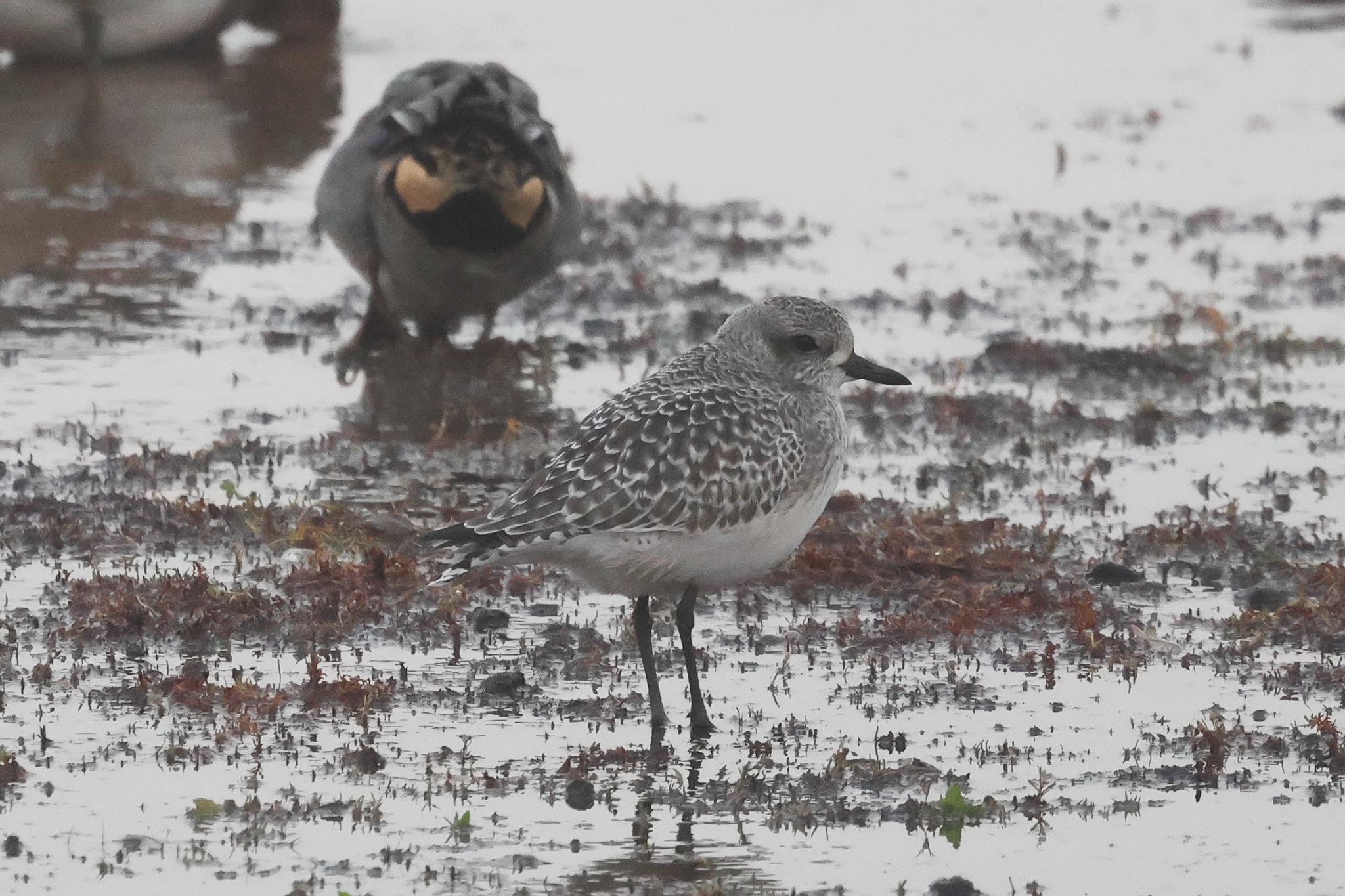
When we got into the hide, a pair of Stonechats were on the new bund, perching up on the tops of the dead thistles and dropping down to the ground to find food. We were hoping there might be a few more waders on here, given it was just after high tide, but there were only more ducks. A Marsh Harrier appeared, hovering over the reeds just to the left of the hide, before turning and heading back to the far bank.
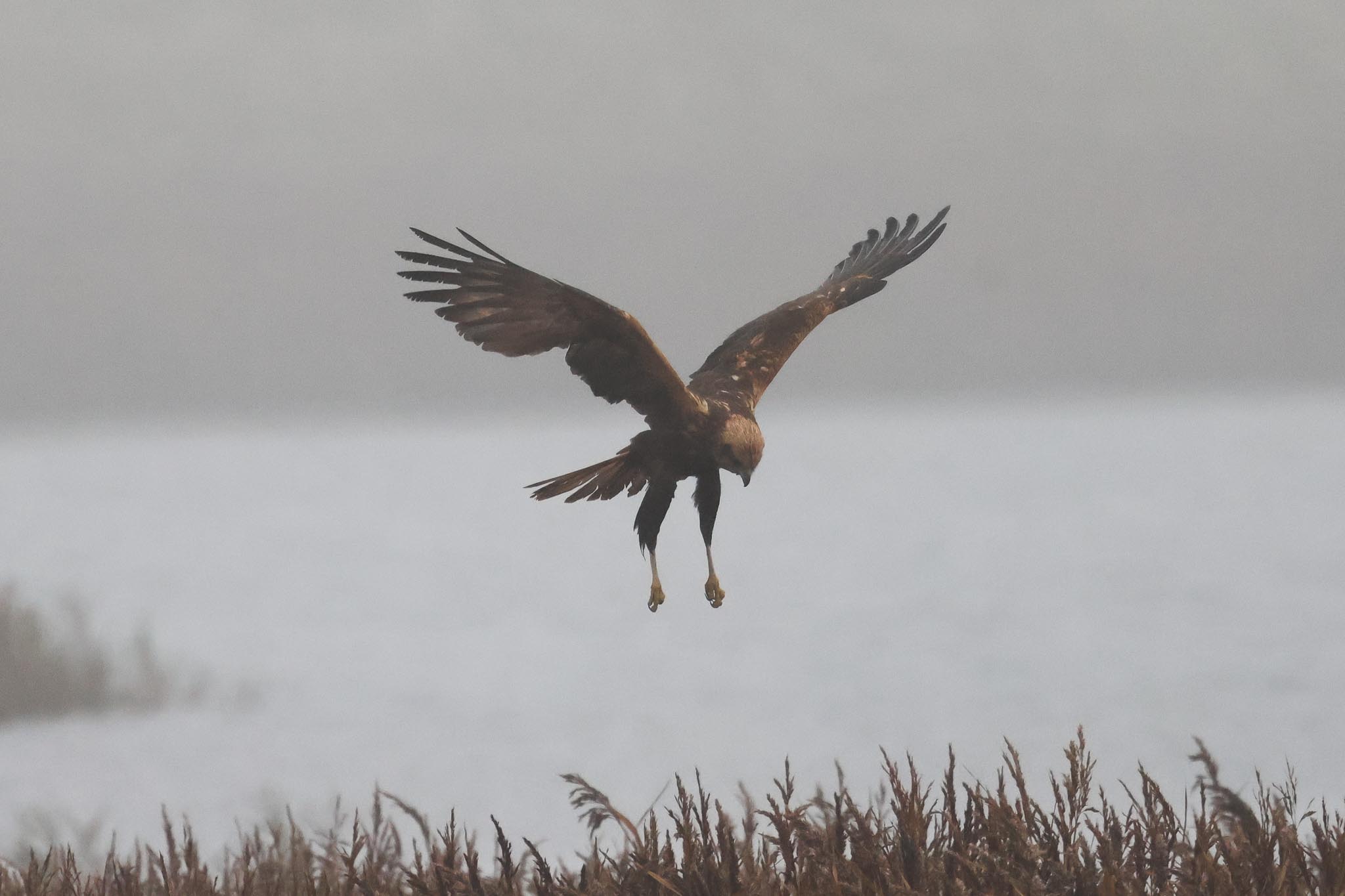
We had hoped that the fog might continue to lift, but it was now proving to be more stubborn. We decided to head out towards the beach anyway, and try our luck. We heard the Spotted Redshank call a couple of times as we walked out and it sounded like it was still out on the saltmarsh. We stopped to look through the waders in the channel at the far end of Volunteer Marsh – plenty of Common Redshank, some nice close Grey Plover, Ringed Plover, Dunlin and Curlew. A single Black-tailed Godwit down towards the back was the first we had seen.
The Spotted Redshank called again and this time it seemed like the sound was coming from the Tidal Pool, so we walked over the bank and scanned its favourite spots but there was no sign of it there either – another Black-tailed Godwit and a couple more Grey Plover and Common Redshanks. A Kingfisher shot across over the water and disappeared in under the bank ahead of us, but quickly flew back out and disappeared over the bank back towards Volunteer Marsh.
Further up, there were more mixed godwits and several Pintail dozing. We were going to have a quick look at them on our way to the beach, but the fog started to descend again, so we pressed on. Quite a few Reed Buntings were perched on the suaeda before the dunes and a flock of Linnets flew in and landed on the bushes by the old pill box.
The tide was going out now but had still not uncovered the mussel beds. There were lots of Bar-tailed Godwits on the beach and lots of Oystercatchers feeding along the shoreline away towards Brancaster. In with them were a few Sanderling and some little groups of Knot. A seal pup had been left behind by the tide at the top of the beach off to the east of us, but it quickly attracted the attention of several paparazzi who had walked down that way and it made its way quickly back to the water.
The fog was coming and going – at one point there was a patch of blue sky and we could see the sun through the clouds behind us. From the top of the beach, we could only see the first bit of the sea and managed to make out a couple of Goldeneye on the water towards Brancaster and a Common Scoter. We were hoping to see more of the scoter flock, so we hung on for a bit but it quickly became clear that visibility was unlikely to improve.
As we started to make our way back, a Weasel ran across the path ahead of us. Two drake Pintail had now woken up and were upending much closer to the path. A nice view, we could see that neither had yet completely regrown its long pin-tailed central tail feathers.
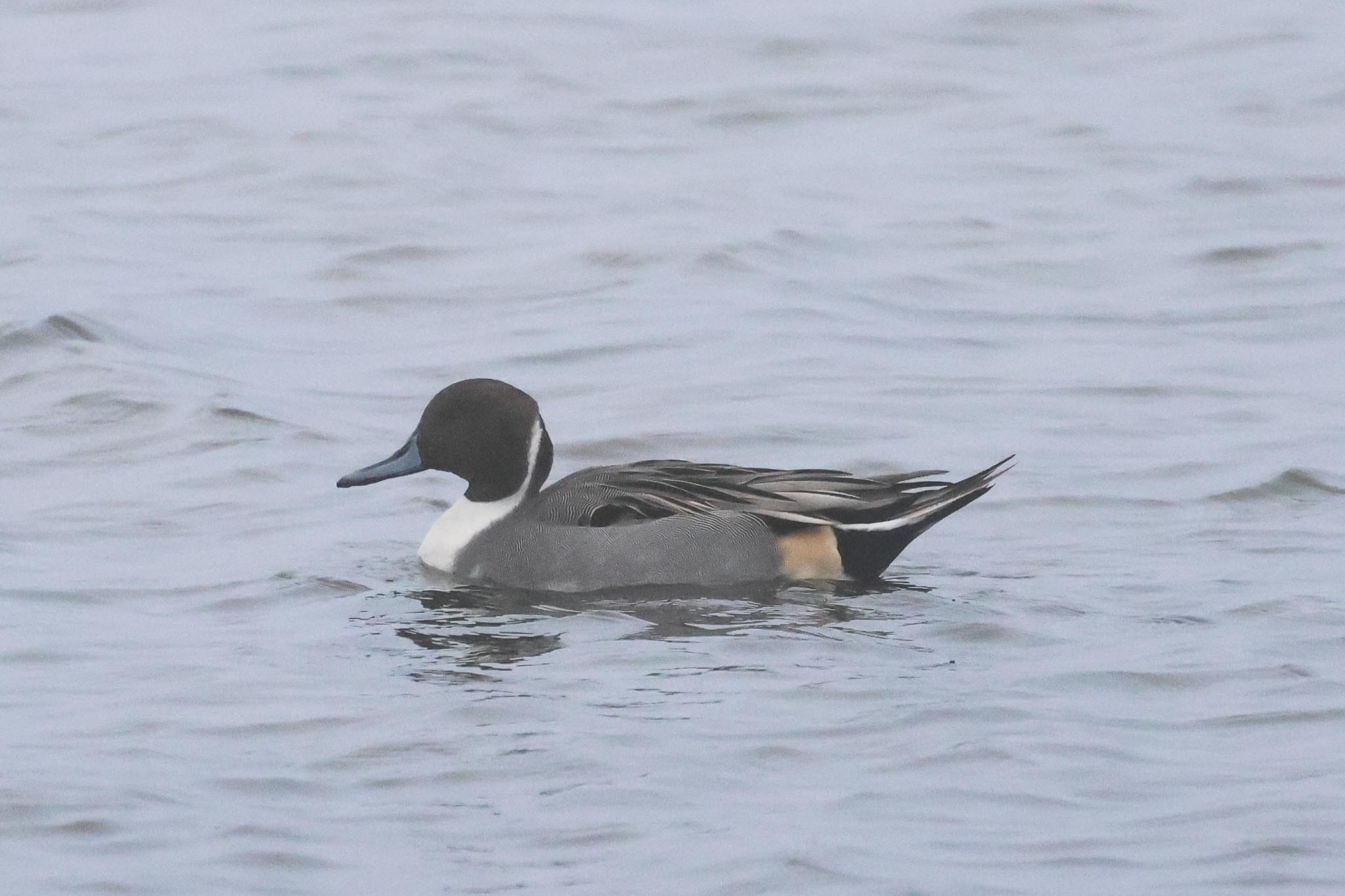
There was still no sign of the Spotted Redshank, but passing the Freshmarsh, a small group of Golden Plover flew in and landed on one of the islands so we stopped to get them in the scope. Back at the Visitor Centre, after a quick look in the shop we opted for an early lunch and a hot drink from the cafe. A Siskin called and we managed to find it in the top of the alders with the flock of Goldfinches. A Great Spotted Woodpecker flew over calling.
After lunch, we headed round to Snettisham. The fog seemed to get thicker as we got round to the Wash coast and when we got up to the outer seawall, we could barely even see any mud beyond the shore or across the pit to the other side. We walked down to Rotary Hide – a few Dunlin and Redshank were on the nearest pools and we could hear Grey Plovers calling in the mist.
There were some other people in the hide and they were looking through their scope. The first bird we got onto was the drake Long-tailed Duck in the gloom, but it dived and disappeared into the murk. The fog was thickening and thinning slightly, and during the marginally clearer moments, when we could almost see across to the other side, we kept refinding the Long-tailed Duck and got some reasonable views of it in the end.
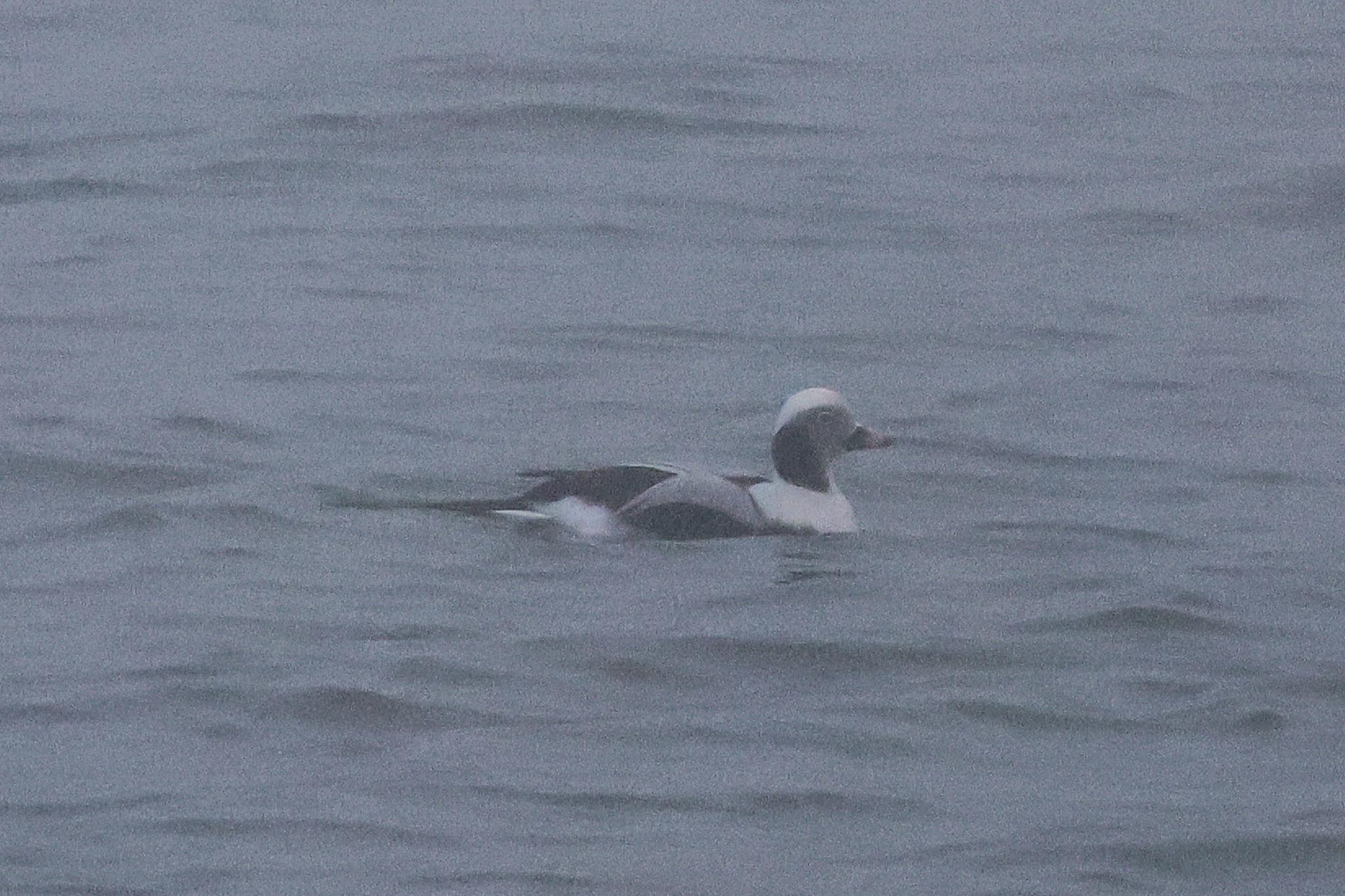
There were lots of Goldeneye on the pit too and some of the drakes were displaying to the females, throwing their heads back. We could see a few Tufted Ducks too and three drake Common Pochard appeared out of the fog.
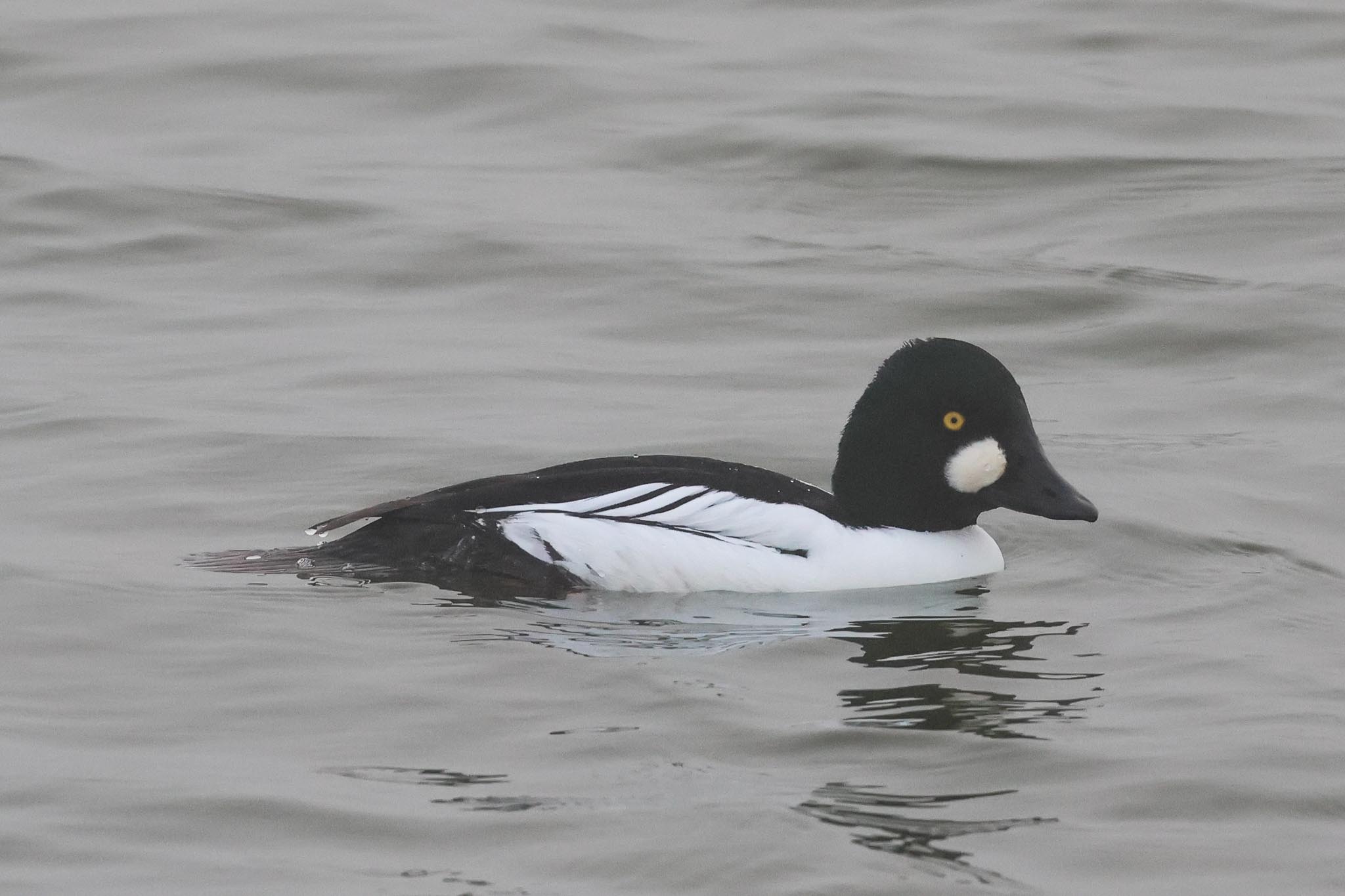
The people in the hide told us they had not seen the Great Northern Diver earlier but a message came through now to say it was visible again from Shore Hide, so we set off down the path to see if we could see it. They did tell us there had been a couple of Snow Buntings down along the shore, so we scanned the gravel on the way down and found them feeding on the stones. They are always very well camouflaged, and all the more so in the mist, but they were very obliging and allowed us close views as we walked past. One Snow Bunting was paler than the other – perhaps the subspecies nivalis from Scandinavia, with the darker one an insulae from Iceland.
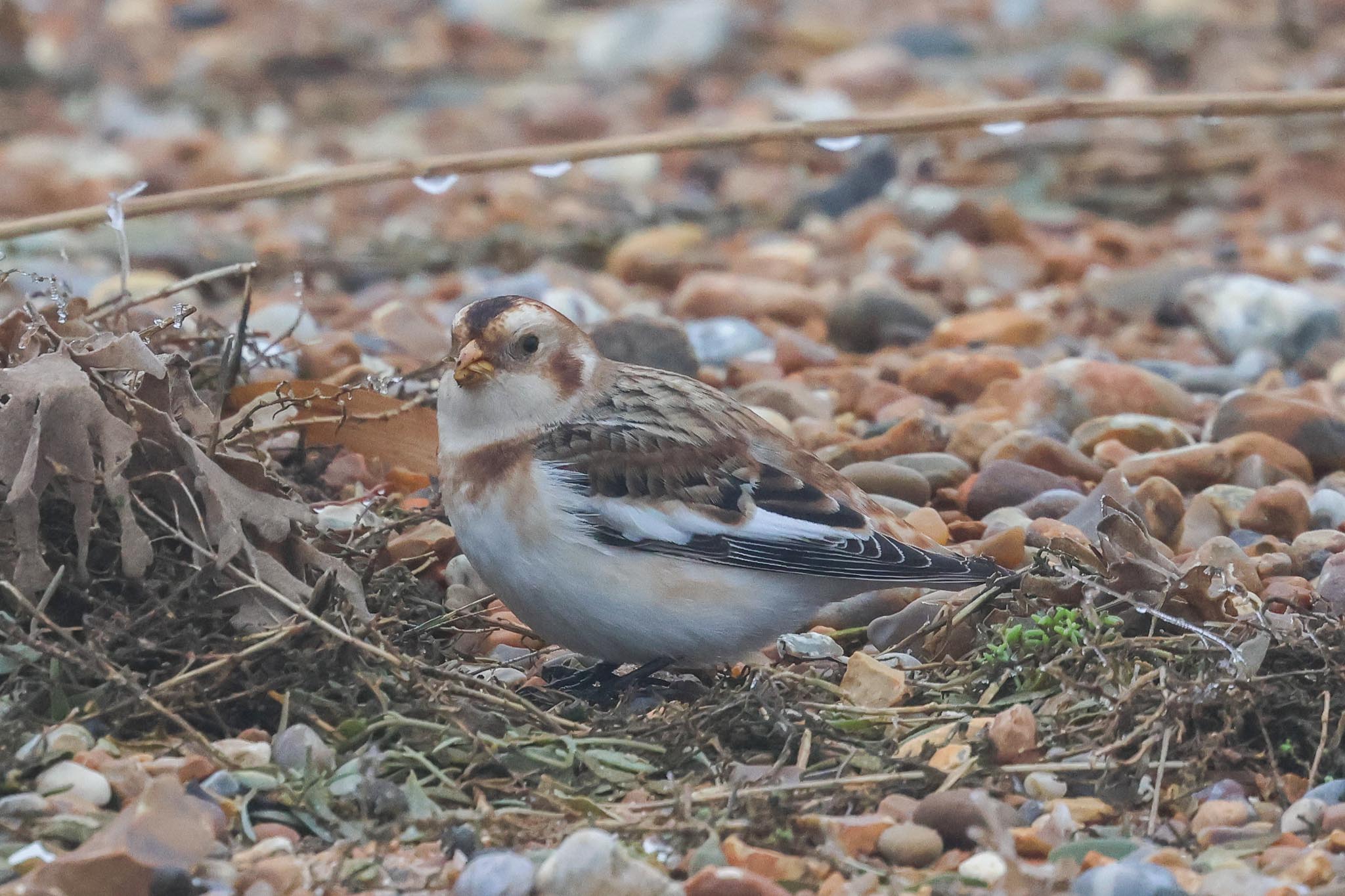
Down in Shore Hide, the fog seemed even thicker that even. There were more Goldeneye and Tufted Ducks from here and a Kingfisher shot past over the water in front of the hide and disappeared into the bank a bit further up. Eventually, the Great Northern Diver appeared out of the gloom further up the pit and although it was diving continually, we eventually all got onto it. It spent a lot of its time swimming with its head held out in front of it, low to the water’s surface. It would snorkel too, with its head underwater, before diving. It disappeared back into the fog and then reappeared a little closer to the hide, where we watched it catch what appeared to be a small crab, although it was hard to see in these conditions.
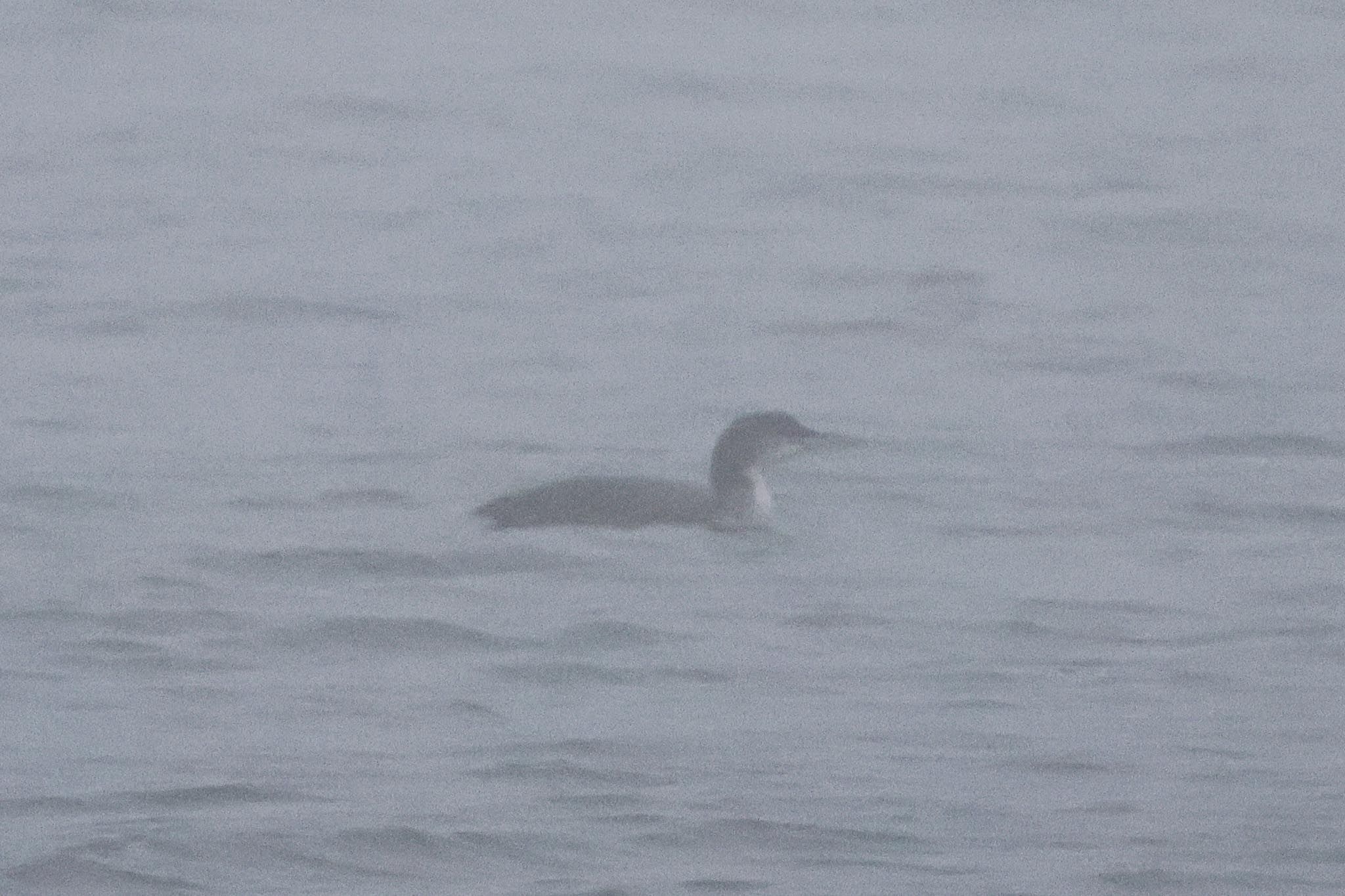
When the Great Northern Diver disappeared back into the gloom again, we decided to make our way back. With the sun starting to go down and losing any of the limited strength it had today, the fog was definitely deepening again and the light was going. It had not been an ideal day for birding, but we had done remarkably well, given the conditions.
